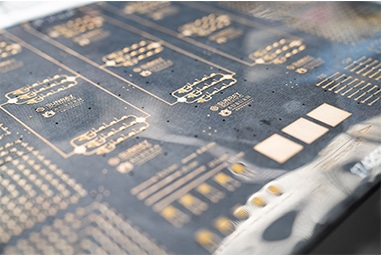This is how sustainable mobility succeeds: Under the focus topic of mobility, LOPEC, a leading global trade fair and congress for flexible, organic and printed electronics, will be showcasing numerous applications of printed electronics for the transport sector in Munich from 5 to 7 March 2024.
From battery monitoring in electric cars to safety features for autonomous driving: Printed electronics are driving innovation in the automotive sector. “The technology is already an integral part of vehicle construction today and is indispensable for the mobility of the next generation,” says Wolfgang Mildner, General Chair of LOPEC and CEO of the consulting and technology company MSWtech. Printed electronics are so flexible and thin that they can be integrated inconspicuously into any objects and surfaces. Thanks to their compactness, they also help to reduce the weight of vehicles. “There are many arguments in favour of using printed electronics in automotive engineering. That’s why we see more and more successful applications at LOPEC every year,” emphasises Mildner.
Established examples include seat occupancy sensors for airbag control, surfaces with touch function as an alternative to mechanical buttons and innovative lighting and heating concepts. Increased safety and comfort while driving are at the centre of attention. For example, LOPEC exhibitor Henkel offers inks with overheating protection for printing seat heaters. The composition of the ink can be used to set a maximum temperature so that the seat heating switches off automatically at 60 degrees Celsius, for example. The technology is also suitable for safely heating the interior of electric vehicles, as new concepts are required here due to the lack of waste heat from the engine. LOPEC exhibitor InnovationLab therefore recommends printed heating elements not only for seats, but also for steering wheels, armrests and other surfaces close to the body. InnovationLab also plans to use transparent printed heating elements to protect windscreens and headlights from icing and fogging. Backlit heating elements in the interior are also feasible.
Focus on e-mobility and autonomous driving
Printed heating foils can also be used to preheat the battery in electric cars in order to increase their performance and service life. As the pressure conditions in the battery pack are also crucial for this, InnovationLab has developed a battery monitoring system consisting of printed temperature and pressure sensors. It records the conditions in the cells and supports battery optimisation. The batteries work best when all cells have the same voltage. This is where LOPEC exhibitor IEE comes into play with its battery balancing system. The company offers complete solutions consisting of printed sensors and other components that monitor the voltage level of the many cells and equalise the charge. IEE’s portfolio also includes battery safety sensors that register imminent overheating or other dangerous battery conditions in good time. Hands-on/off detection (HOD) from IEE is a must for autonomous driving. A printed multi-zone sensor recognises whether the driver has a firm grip on the steering wheel or is only touching it lightly or not at all. This information is crucial for safely switching from automated to manual driving mode.
Innovation driver in many sectors
As a key and cross-sectional technology, printed electronics acts as a booster in many industries. “At LOPEC, representatives from a wide range of industries meet and inspire each other,” emphasises Armin Wittmann, Project Manager of LOPEC. Exhibitor E Ink, for example, is now tapping into a new market with the automotive industry. The company’s electronic paper has so far mainly been used in e-readers, but is also an ideal solution for self-tinting windows, digital signage, electric number plates and car bodies that change colour and pattern at the touch of a button. “Printed electronics expand both the technical possibilities and the creative scope,” summarises Wolfgang Mildner: “This makes the technology unbeatable in many industries.” LOPEC provides cross-industry information about the products and potential of printed electronics along the entire value chain.

LOPEC
LOPEC (Large-area, Organic & Printed Electronics Convention) is the leading international event for printed electronics. The combination of trade fair and convention perfectly reflects the complexity and dynamics of this young industry. LOPEC is jointly organised by the OE-A (Organic and Printed Electronics Association) and Messe München GmbH.
Munich Trade Fair Centre
As one of the most important trade fair organisers, Messe München presents the world of tomorrow at its more than 80 trade fairs worldwide. The portfolio includes trade fairs for capital and consumer goods as well as for new technologies. Together with its subsidiaries, it organises trade fairs in China, India, Brazil, South Africa, Turkey, Singapore, Vietnam, Hong Kong, Thailand and the USA. With a network of over 15 affiliated companies and almost 70 foreign representatives, Messe München is active in more than 130 countries. The more than 150 events it organises each year attract around 50,000 exhibitors and around three million visitors in Germany and abroad.
OE-A
The OE-A (Organic and Printed Electronics Association) is the leading international industry association for flexible, organic and printed electronics. It represents the entire value chain of this industry. Its members are leading international companies and organisations ranging from research and development institutes, mechanical engineers and material manufacturers to producers and end users. More than 200 companies from Europe, Asia, North America and Africa work together in the OE-A to promote the development of a competitive infrastructure for the production of flexible and printed electronics.

